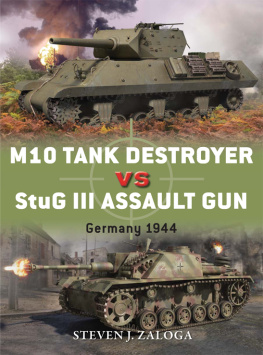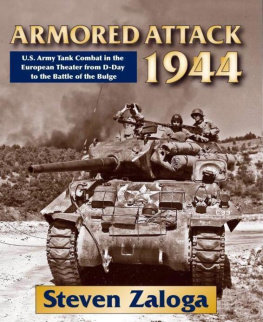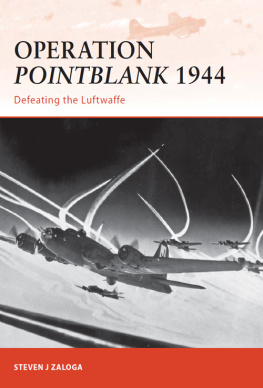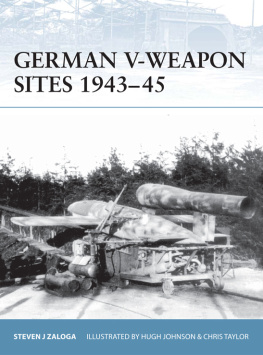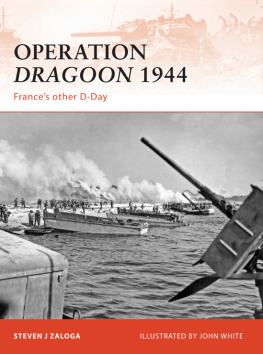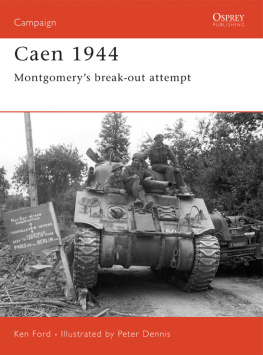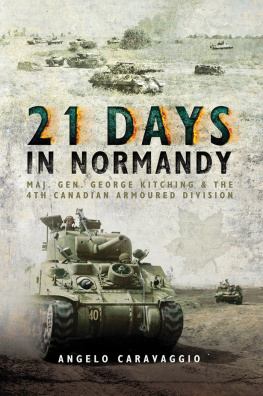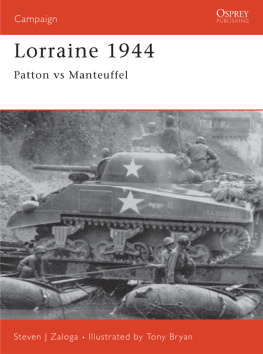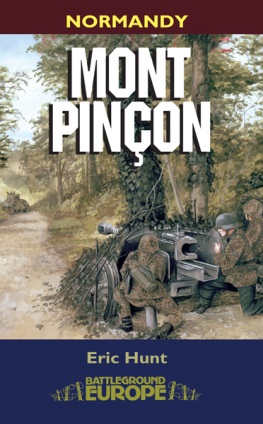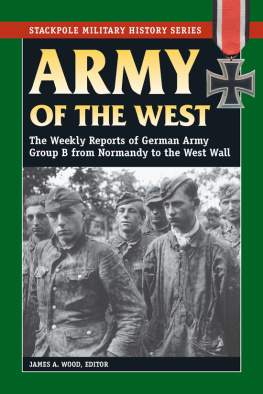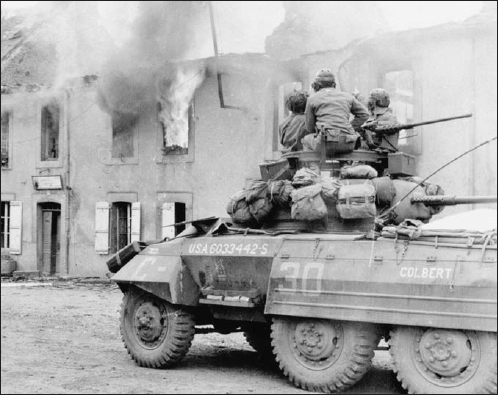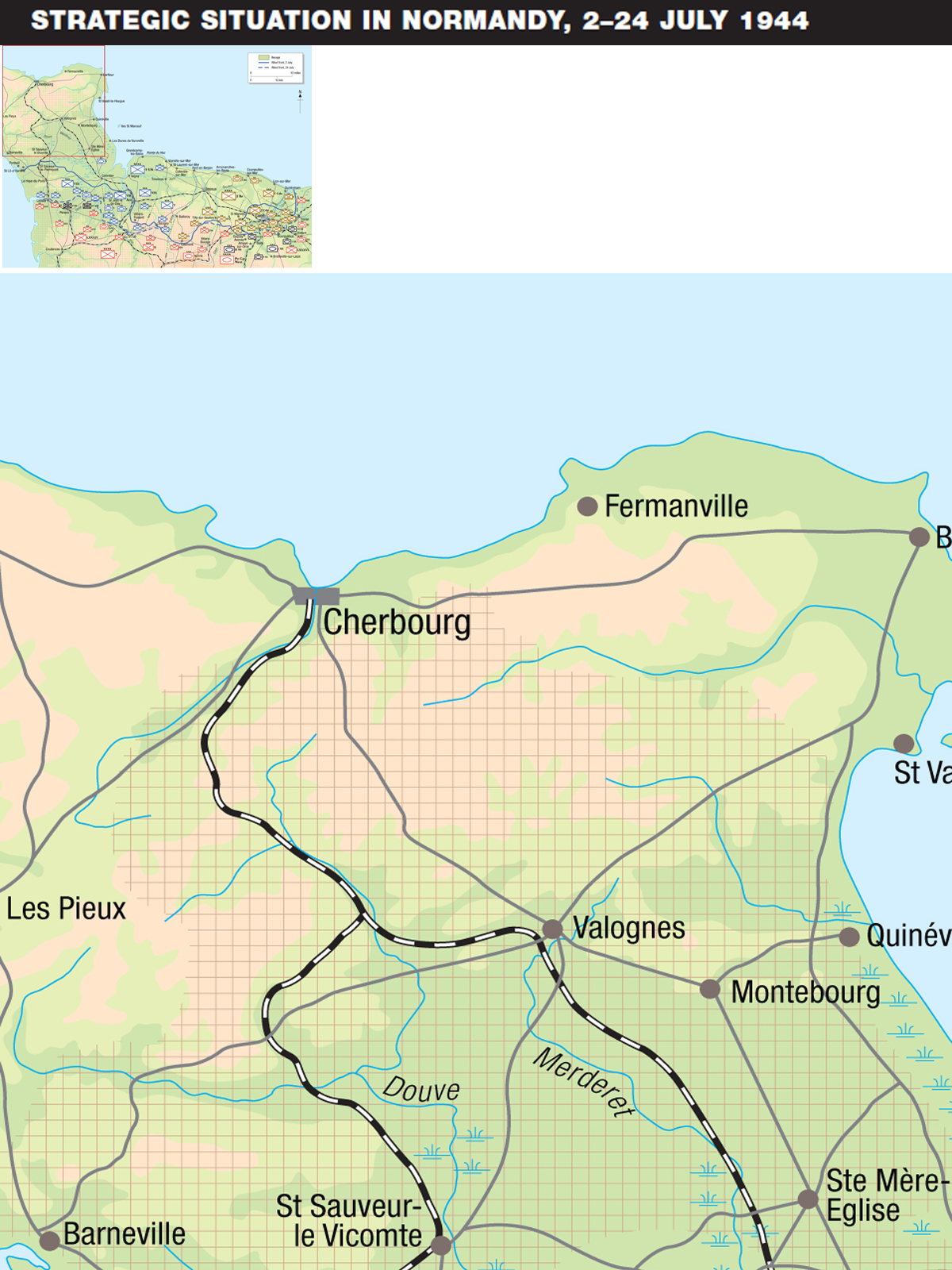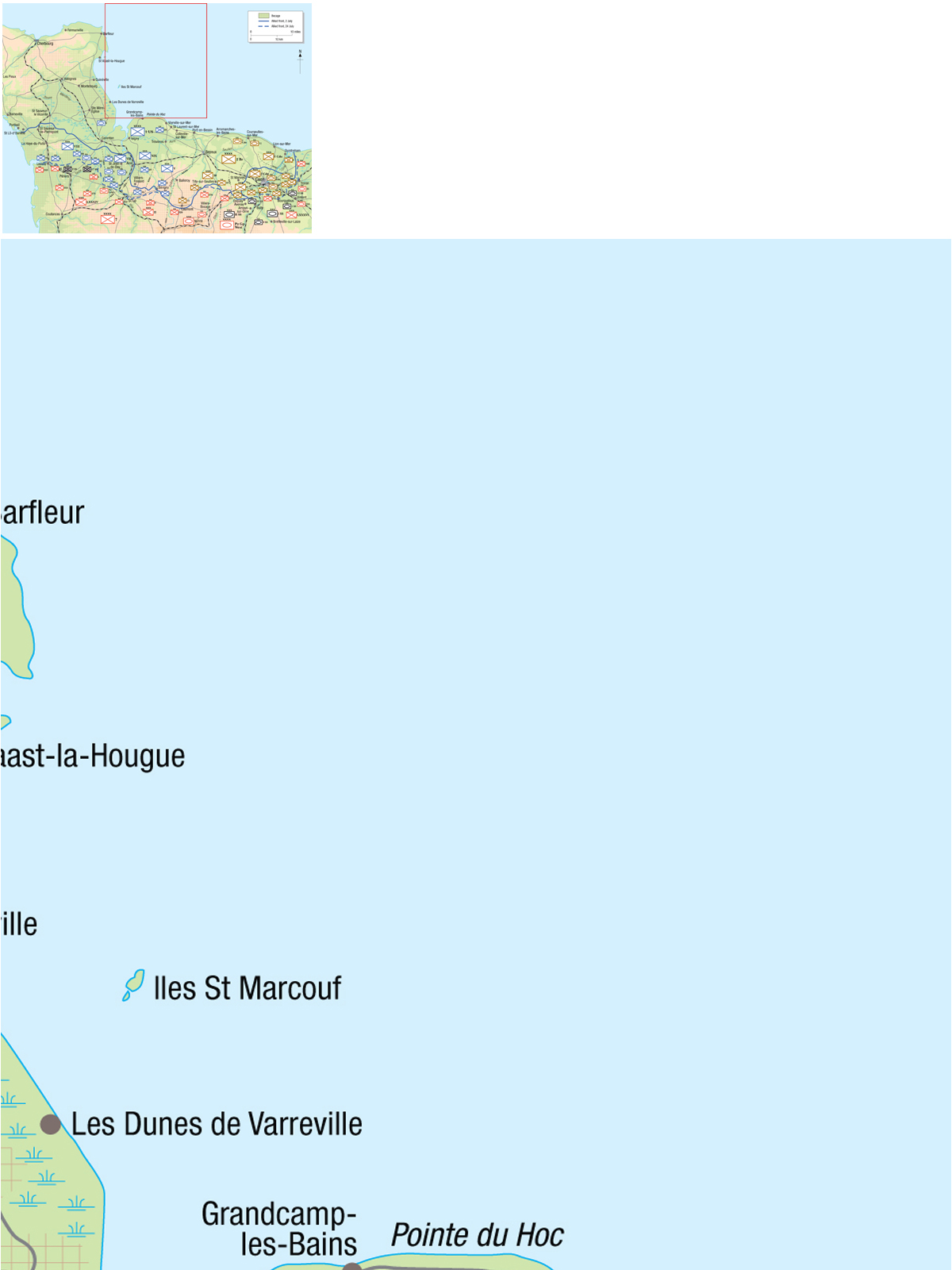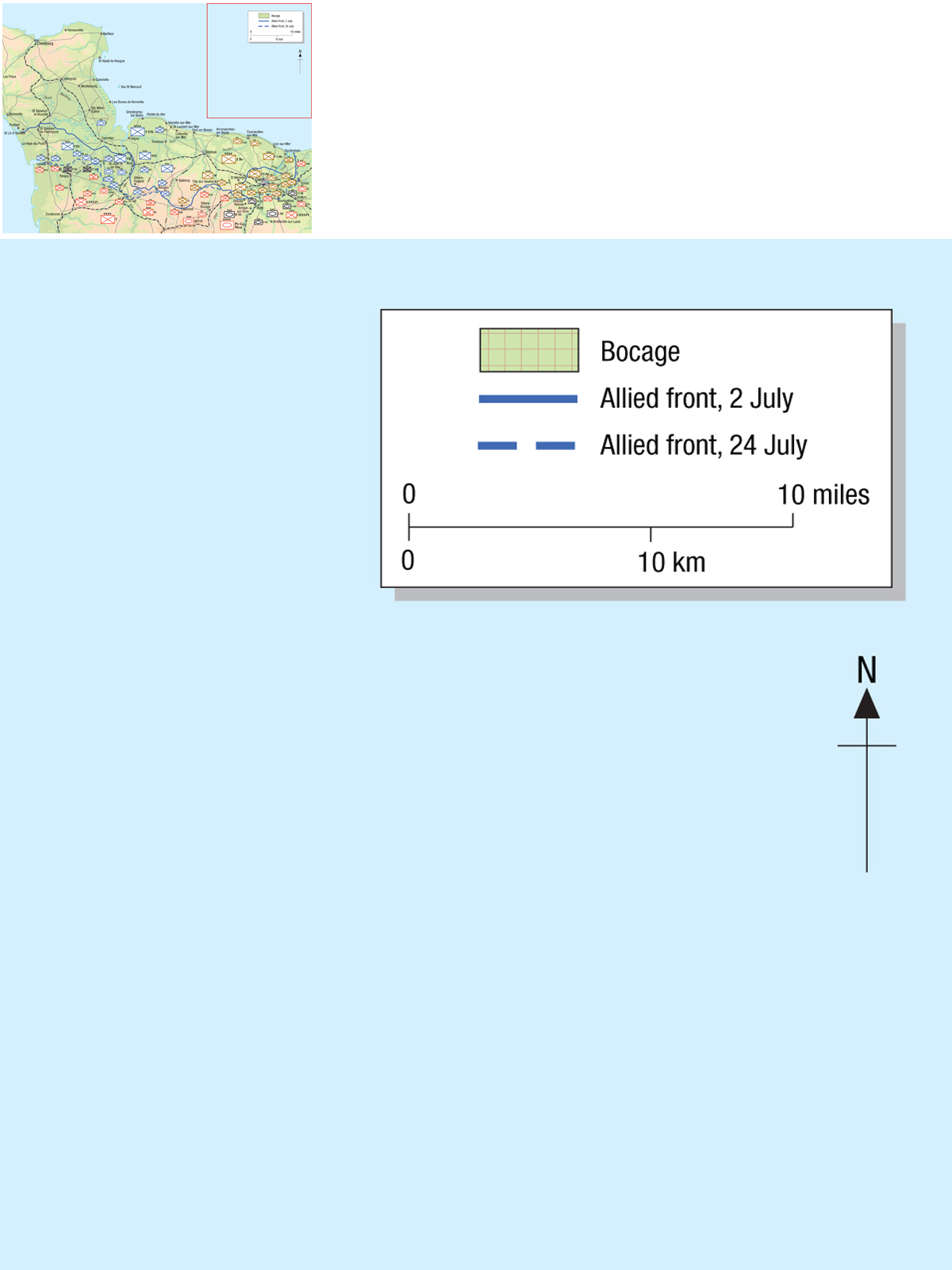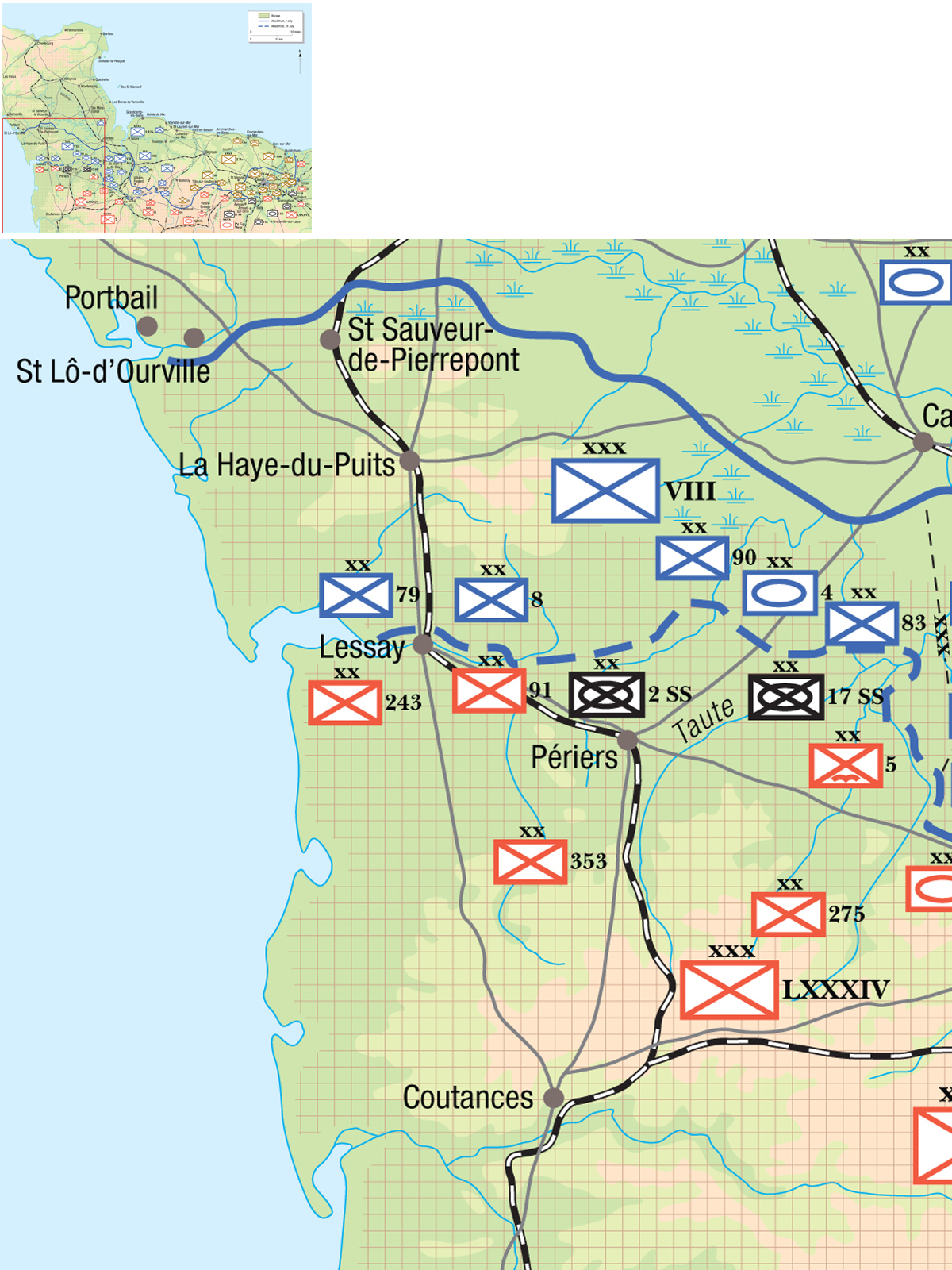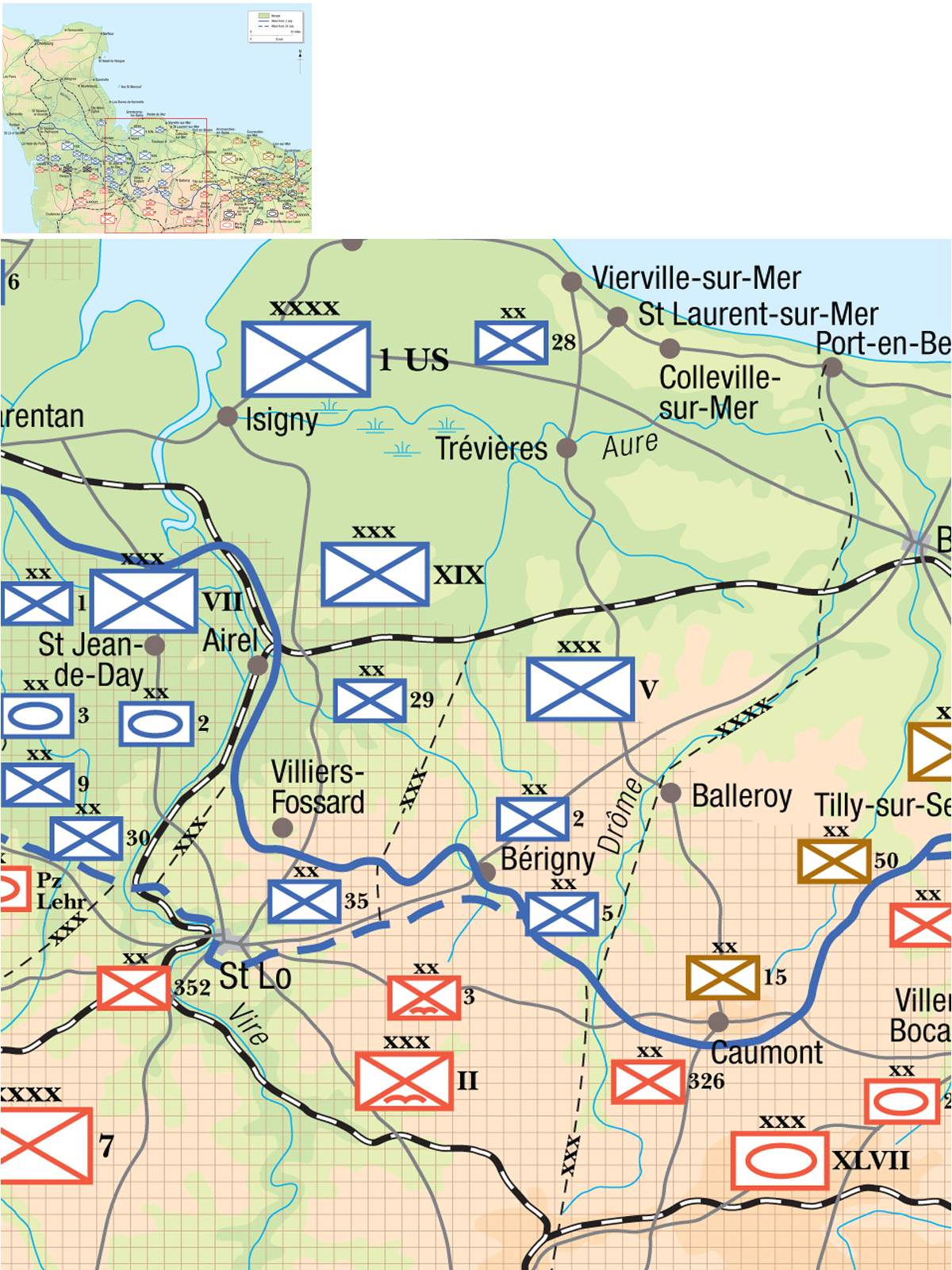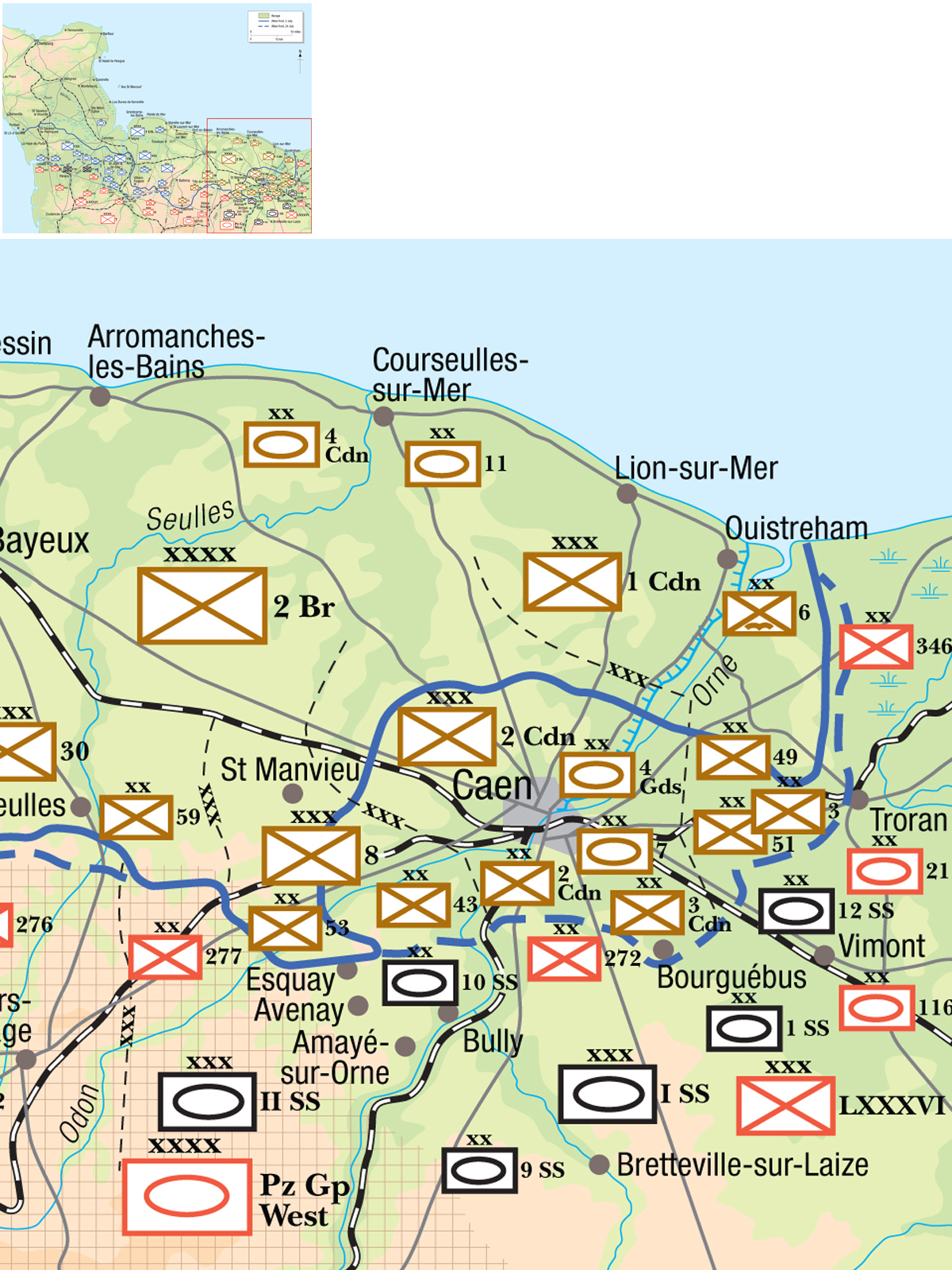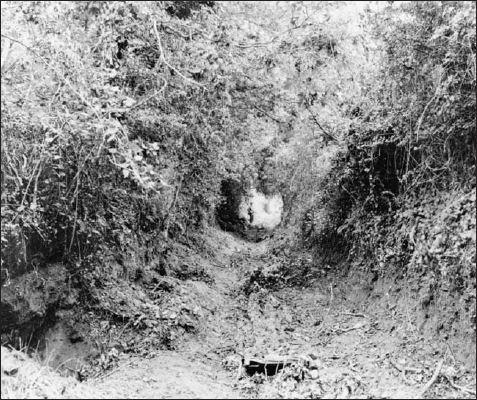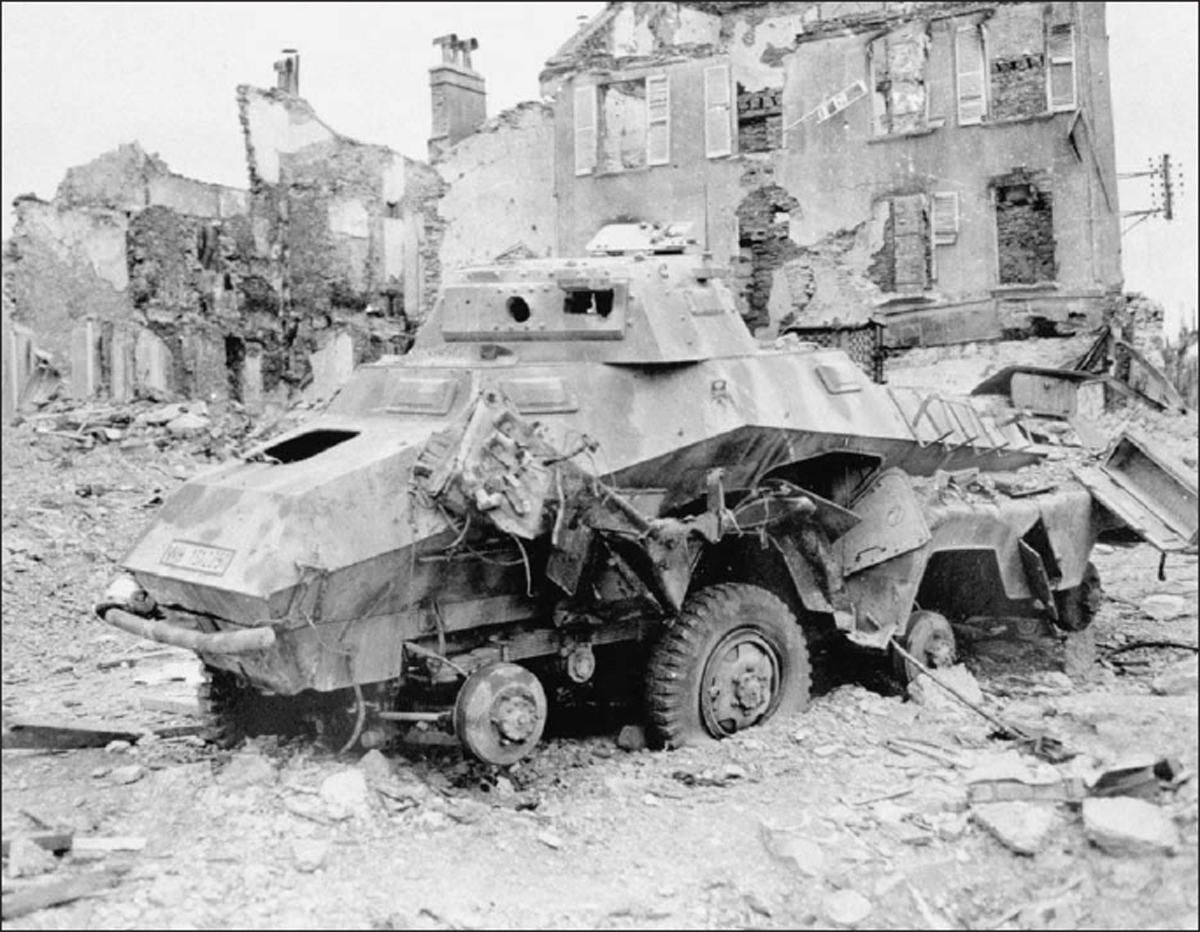Campaign 88
Operation Cobra 1944
Breakout from Normandy
Steven J Zaloga Illustrated by Tony Bryan
Series editor Lee Johnson Consultant editor David G Chandler
CONTENTS
INTRODUCTION
O ne of the most decisive months of World War II was the thirty days between 25 July 1944 and 25 August 1944, starting with Operation Cobra, and ending with the liberation of Paris. By the end of August, German forces in Normandy were utterly destroyed, and the remaining German forces in central and southern France were in headlong retreat to the German frontier. The following month, Allied forces liberated much of Belgium and the Netherlands, and penetrated the Siegfried line into Germany. Operation Cobra fundamentally improved the prospects for Allied victory.
THE STRATEGIC SITUATION
In mid-July 1944 Allied forces were bogged down in a bloody stalemate in Normandy. The British 21st Army Group, commanded by General Bernard Law Montgomery, had attempted a series of tank offensives to break out of the salient near Caen. Montgomery had hoped to seize the city shortly after the June invasion, but had been frustrated by the skillful German defense. Caen finally fell on 10 July 1944, but the next effort to break through the tenacious German defenses on 18 July 1944, Operation Goodwood, was a costly failure. The difficulties in the British sector were all the more worrying as the original Allied plans of May 1944 had assumed that Montgomerys forces would take the lead out of Normandy due to their closer proximity to the German frontier. The area around Caen opened onto rolling countryside, suitable for mechanized operations, while the American sector to the west was less suitable.
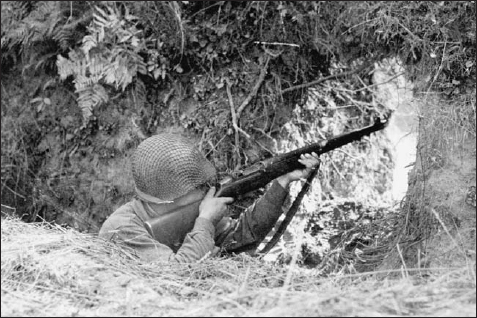
Operation Cobra was conducted in the bocage, a type of dense coastal hedgerow. The hedges were so thick that they created a natural fortification line for the defender. Here, a rifleman of the US 29th Division has cut a firing hole through a hedge during the fighting along the Vire river on 7 August 1944.
Nowhere was the bocage more claustrophobic than along the boundaries of two properties. These were often separated by two hedgerows, creating a trench between them. They made ideal defensive positions like this one near Carillon.
The capture of the key road junction at St. L was vital to the American plans for Operation Cobra. The city finally fell on 1819 July, setting the stage for the offensive. In the ruins of the city is a German SdKfz 231 armored car. This was a relatively old type of reconnaissance vehicle that had been largely replaced with the more modern SdKfz 234 series by the time of the Normandy campaign.
An essential element for Allied planning for Operation Cobra was the campaign to disrupt German transportation to prevent reinforcements from reaching Normandy. Here, an A-20 medium bomber of the 9th Tactical Air Force takes part in a strike against the rail-yards at Busigny, north-east of Paris.
The First US Army, commanded by General Omar Bradley, had its share of frustrations as well. Allied planners had seriously miscalculated the tactical implications of the terrain in the American sector. The area near the coast was boggy, exacerbated by the summer rains in July. Further inland the terrain quickly turned into bocage, the French term for coastal farmlands bordered by hedgerows. The hedgerows had grown dense over the centuries, the local farmers clipping off branches for firewood, and leaving a thick bank of roots and earth, three or four feet high. The bocage was ideal for defense, forming a band of natural fortification unsuitable for maneuver. It undermined the US Armys firepower advantages since the hedgerows provided natural protection against artillery and air attack. The Germans skillfully exploited the bocage, defending the sector field by field.
Nevertheless progress had been made, notably the capture of the port of Cherbourg at the end of June. An assault towards Coutances had been halted, but the First US Army reached the outskirts of St. L by mid-July. Frustrated at the failures in the British sector, Bradley began to consider the possibilities of a breakthrough in the American sector. The outline of what would become Operation Cobra began to take shape in early July 1944. Bradley recognized that for a mechanized advance to succeed, it would be necessary to advance beyond the bocage into the more open country south of St. L. Instead of the broad advance that had been characteristic of the American operations in June and early July, Bradley decided to stage the breakthrough on a narrow front by a single corps, with the corps on either flank keeping the German forces tied down. The original Overlord plan for the Normandy invasion assigned Bradleys forces the task of seizing the ports in Brittany. The key objective of the Cobra breakthrough was the city of Avranches, the gateway to Brittany. By initiating Cobra near St. L and swinging west towards Avranches, the offensive could also trap a large portion of the German Seventh Army. Bradleys plans were supported by intelligence reports that suggested that the German army in Normandy was near breaking point.
For the Germans the strategic situation was grim. The summer of 1944 had seen the entire Eastern Front collapse in a series of catastrophic Red Army offensives. The Soviet forces had struck in three successive phases. The first offensive crushed German defenses around Leningrad and in Finland and the Red Army surged forward along the Baltic. The most destructive was the June offensive in Byelorussia, codenamed Operation Bagration [see Campaign Series 42], which destroyed Army Group Center. The success of Bagration pushed the Red Army into central Poland and allowed the launching of another offensive towards Lvov and Sandomierz in July that unhinged the southern wing of German defenses in the east. The Red Army poured into the Balkans, and Germanys main source of oil was soon threatened. The situation in the Mediterranean theater was bleak, with Rome falling in June 1944. The successful defense of the Normandy bridgehead through the middle of July was one of the few bright spots in the strategic picture.
Next page

